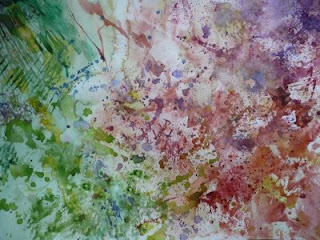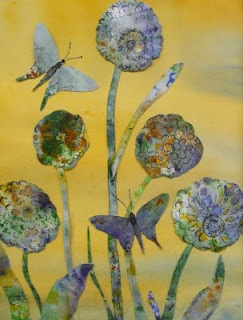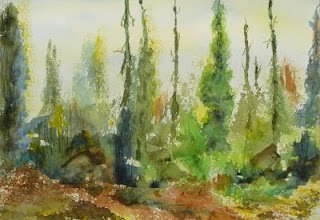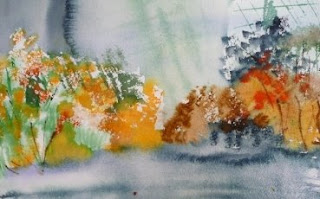It's useful, and a lot of fun, to experiment with ways of making marks on paper without using a brush. Textures can be stamped on with sponges, crumpled paper or plastic, velcro, bubble wrap, cotton balls, leaves, cardboard edges and so on.
Lines can be drawn with twigs, toothpicks, yarn, credit cards and anything else handy.
Paint can be sprayed with a toothbrush, dribbled on or blown through a screen.
The challenge in this exercise is to create a 'texture sheet' using as many different ways of applying paint as possible. The idea is to put texture on top of texture and to have every few inches of surface different.

Here is one example of a 'Texture Sheet'. And below are several examples of ways to put this to use.

Georgina cut out shapes from her texture sheet and glued them onto paper coated with a yellow wash.

Jean glazed over the lower portion of her texture sheet and refined the texture on top until she had a luminous landscape and water reflections.

Lois created a landscape as she was putting together her texture sheet. Trees were created by tilting the paper and letting the paint drips run.

Pat used the textures she discovered in the texture exercise to quickly paint a small landscape. After putting wet washes on the top and bottom sections she ran a band of textures across the middle.